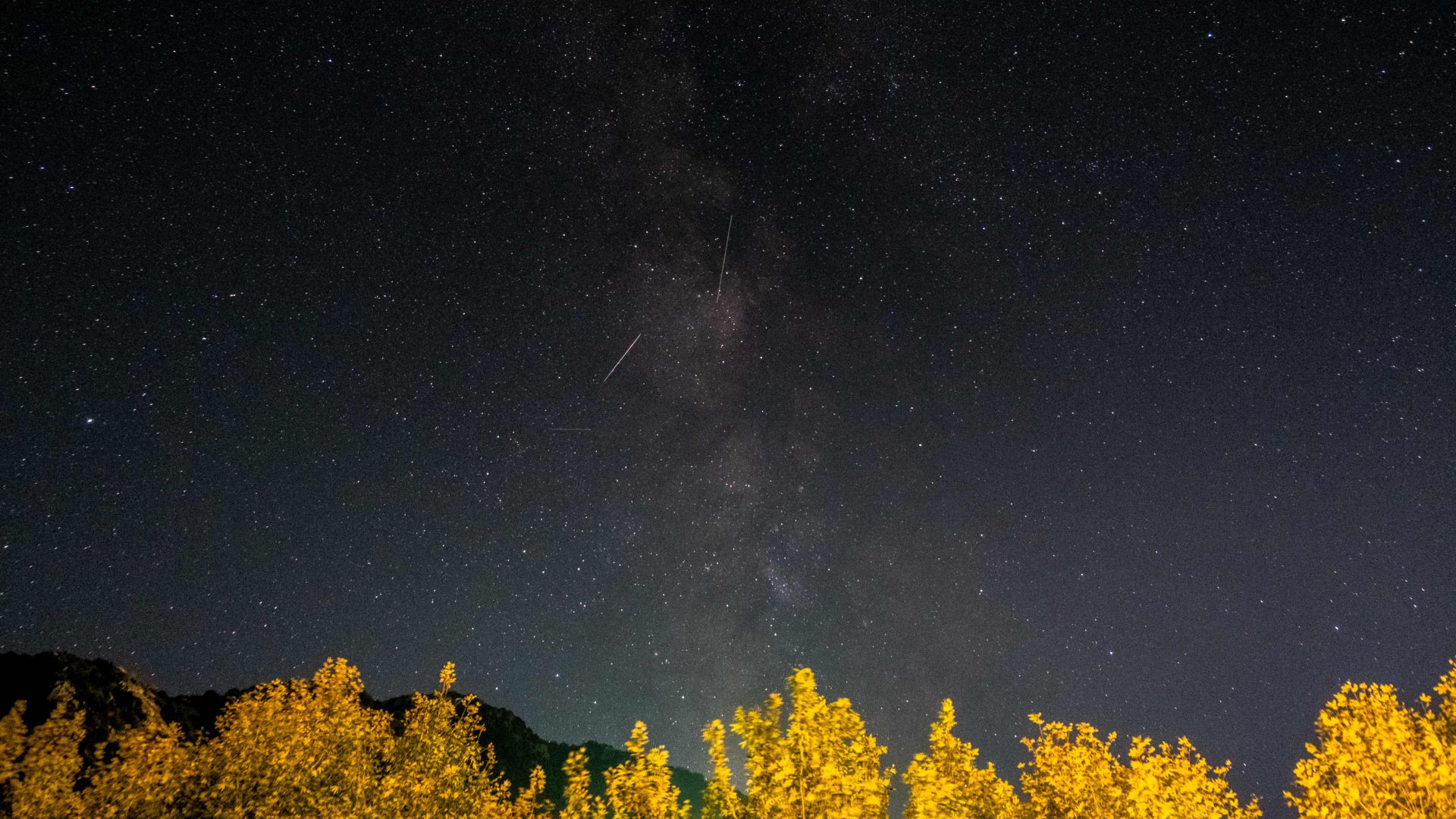Get ready stargazers! The Orionid meteor shower peaks next week overnight on Oct. 20-21, bringing with it a flurry of spectacular ‘shooting stars’ to brighten a blissfully dark moonless sky.
The Orionid meteor shower is active from Oct. 2 to Nov. 7. It occurs when Earth barrels through the trail of debris shed by Halley’s Comet as it makes its 76-year orbital tour of the solar system. Orionid ‘shooting stars’ arise when ancient comet particles collide with our planet at speeds of roughly 41 miles per second (66 kilometers per second), burning up in a magnificent display as they are overwhelmed by friction.
In 2025, the shower will reach peak activity overnight on Oct. 20-21, when 10-20 meteors could be witnessed each hour blazing away from a point of origin — known as a radiant — located in the constellation Orion, fairly close to the red giant star Betelgeuse. During exceptional years, the shower can see peak rates of 50 to 75 meteors each hour, putting it on par with the more prolific August Perseid meteor shower.
The Orionid meteor shower will unfold against a pristinely dark, moonless sky — unlike the Perseids, whose August peak was somewhat ruined by the light cast by a waning gibbous moon that hid dimmer members of the shower from view.
Viewing tips
As always when viewing meteor showers, it’s best to wrap up warm, head away from city lights and allow 30 minutes for your eyes to adapt to the night sky. The best time to hunt for Orionids is in the predawn hours of Oct. 21, when the radiant can be found high above the southern horizon.
Nikon Z8
The Nikon Z8 excels in just about every department and we rate it as the best overall camera out there. Check out our Nikon Z8 review for a more in-depth look.
To maximize your chances of seeing the Orionids, first locate Betelgeuse shining to the upper left of the three distinctive stars that form the famous asterism of Orion’s Belt. Next pick out a patch of sky 40 degrees above the star. (The width of your clenched fist held at arm’s length accounts for 10 degrees of sky.) Here the shooting stars will be at their most impressive.
Orionids are known for their blistering speed and for the glowing trains, or trails left in their wake, which can endure for several seconds after their passage. While viewing them, be on the lookout for spectacular fireballs — especially bright meteors that flare dramatically to outshine even the brightest planets in the night sky.
Be sure to read our guide to photographing shooting stars if you’re interested in capturing your own unique view of the Orionid meteor shower and while you’re at it why not check out our picks of the best lenses and cameras for astrophotography in 2025.
Editor’s Note: If you take an image of an Orionid meteor and want to share it with Space.com’s readers, then please send your photo along with your comments, name and location to [email protected].
First Appeared on
Source link













